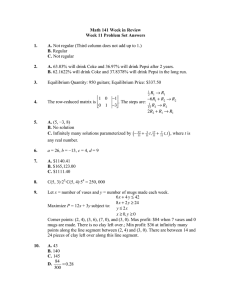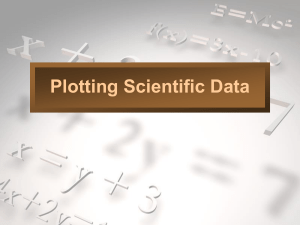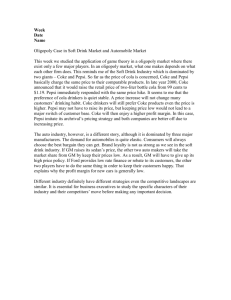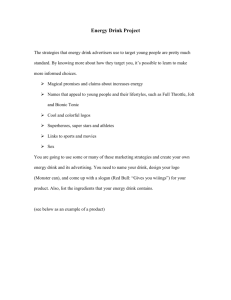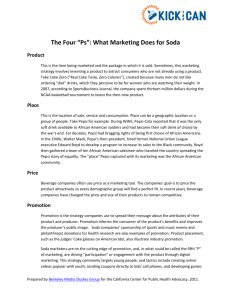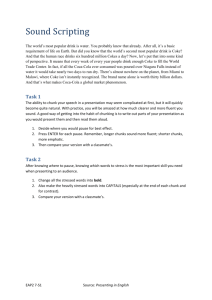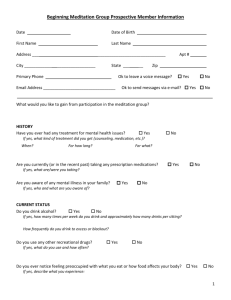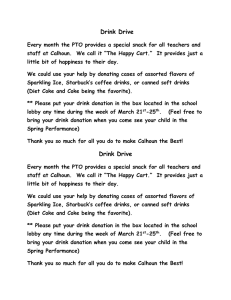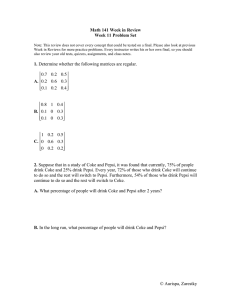Document 10413189
advertisement
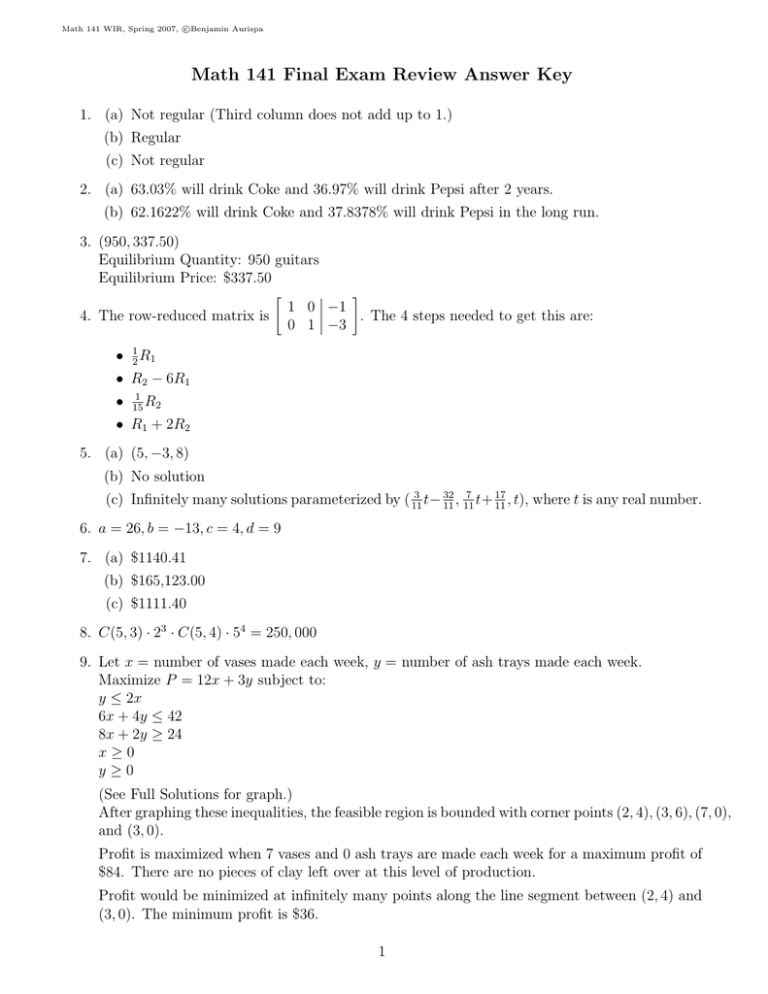
c
Math 141 WIR, Spring 2007, Benjamin
Aurispa
Math 141 Final Exam Review Answer Key
1. (a) Not regular (Third column does not add up to 1.)
(b) Regular
(c) Not regular
2. (a) 63.03% will drink Coke and 36.97% will drink Pepsi after 2 years.
(b) 62.1622% will drink Coke and 37.8378% will drink Pepsi in the long run.
3. (950, 337.50)
Equilibrium Quantity: 950 guitars
Equilibrium Price: $337.50
"
4. The row-reduced matrix is
•
#
1 0 −1
. The 4 steps needed to get this are:
0 1 −3
1
R
2 1
• R2 − 6R1
•
1
R
15 2
• R1 + 2R2
5. (a) (5, −3, 8)
(b) No solution
3
32 7
(c) Infinitely many solutions parameterized by ( 11
t− 11
, 11 t+ 17
, t), where t is any real number.
11
6. a = 26, b = −13, c = 4, d = 9
7. (a) $1140.41
(b) $165,123.00
(c) $1111.40
8. C(5, 3) · 23 · C(5, 4) · 54 = 250, 000
9. Let x = number of vases made each week, y = number of ash trays made each week.
Maximize P = 12x + 3y subject to:
y ≤ 2x
6x + 4y ≤ 42
8x + 2y ≥ 24
x≥0
y≥0
(See Full Solutions for graph.)
After graphing these inequalities, the feasible region is bounded with corner points (2, 4), (3, 6), (7, 0),
and (3, 0).
Profit is maximized when 7 vases and 0 ash trays are made each week for a maximum profit of
$84. There are no pieces of clay left over at this level of production.
Profit would be minimized at infinitely many points along the line segment between (2, 4) and
(3, 0). The minimum profit is $36.
1
c
Math 141 WIR, Spring 2007, Benjamin
Aurispa
10. (a) 43
(b) 140
(c) 145
84
7
(d)
=
= 0.28
300
25
16
19
16
(b)
19
10
2
5
, P (F ) = 19
, P (E ∩ F ) = 19
(c) P (E) = 19
E and F are not mutually exclusive because P (E ∩ F ) 6= 0
E and F are not independent because P (E ∩ F ) 6= P (E) · P (F )
11. (a)
12. 69.1804
13. (a)
C(10, 3)C(24, 5) + C(8, 4)C(26, 4) − C(10, 3)C(8, 4)C(16, 1)
= 0.3312
C(34, 8)
(b) 1 −
C(27, 8)
= 0.8777
C(34, 8)
14. 0.1257
15. E(X) = −$0.28, σ = 2.3287, V ar(X) = σ 2 = 5.4228
"
16. X =
#
25675
. Need 25675 units of food and 10400 units of shelter.
10400
17. 0.0033
18. Break-even quantity: 550 calendars
Break-even revenue: $7700
19. 0.0322
20. 3! · P (5, 3) · P (6, 4) · P (5, 2) = 2, 592, 000
21. 0.8210
22. N = 14.92 rounded to 15 quarters, which is 3.75 years. $1000 of the accumulated amount is
interest.
23. (a) {2, 4}
(b) {1, 6}
(c) {1, 2, 3, 4, 6}
24. y = 29 x − 2
25. 0.2023
2
